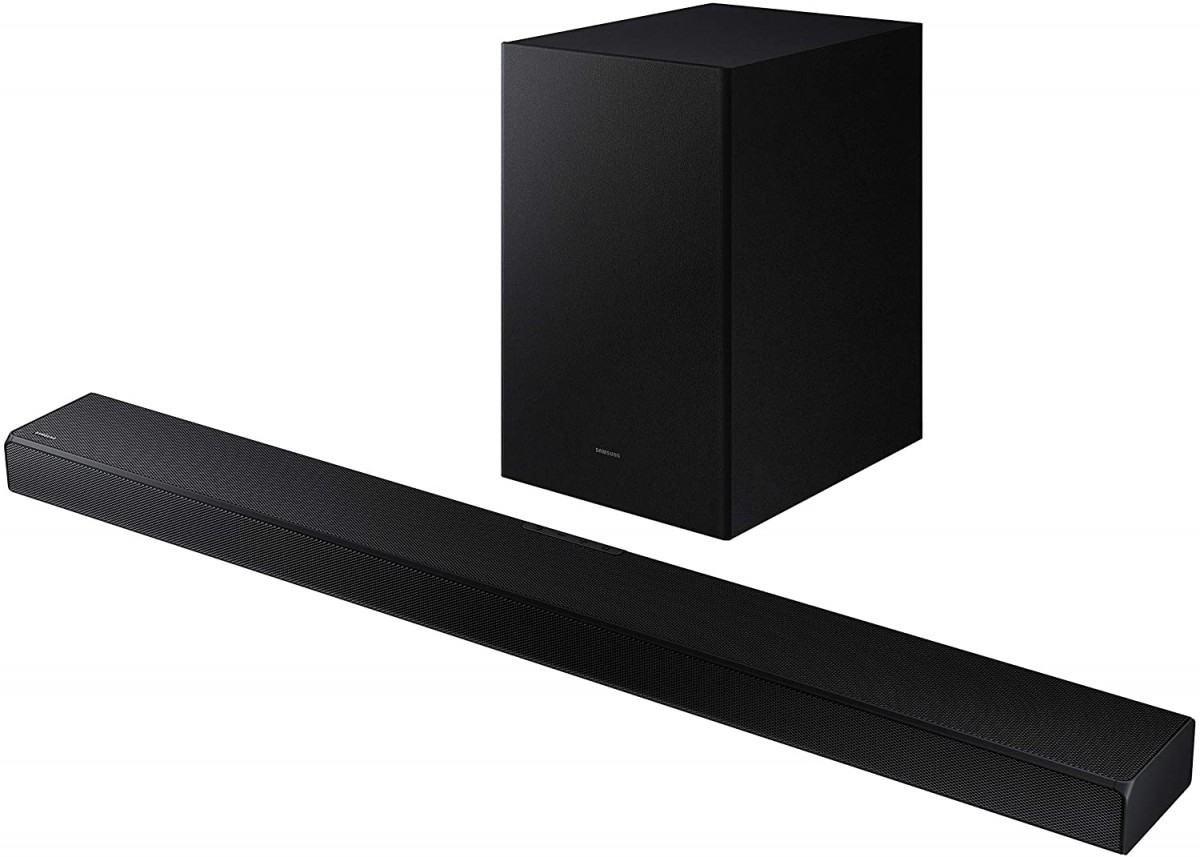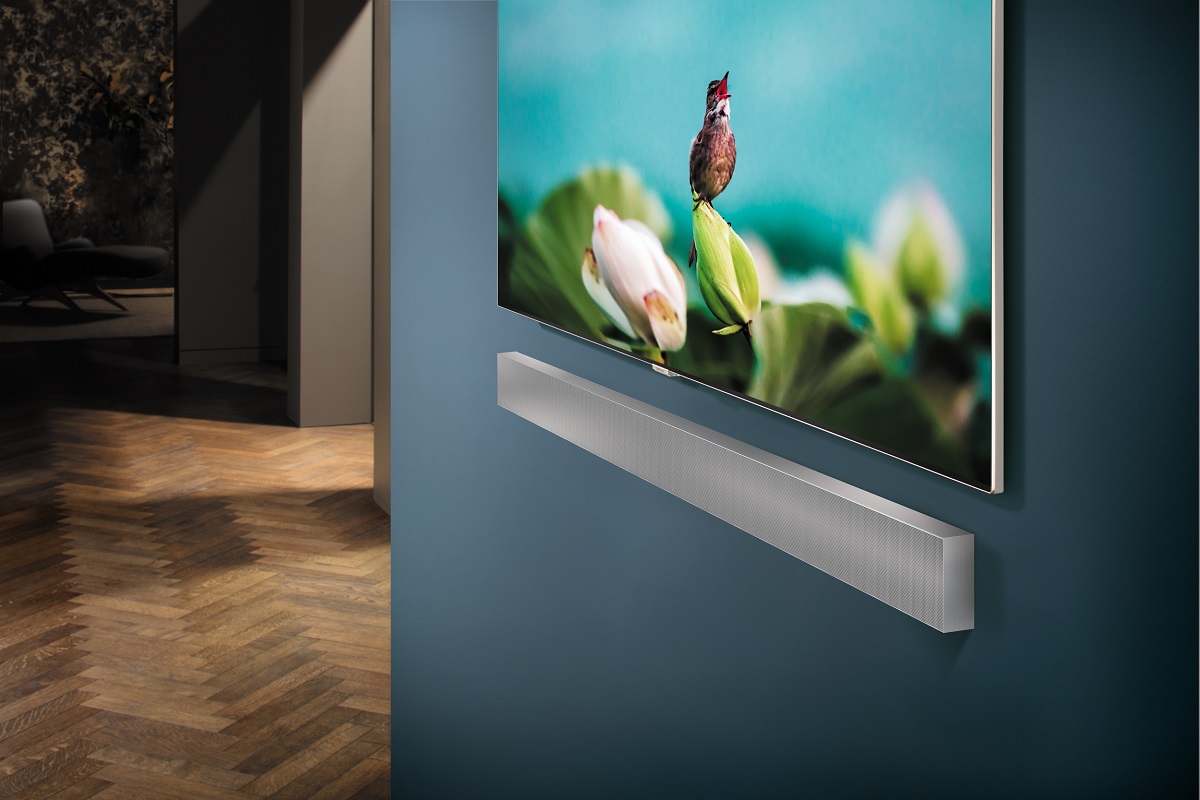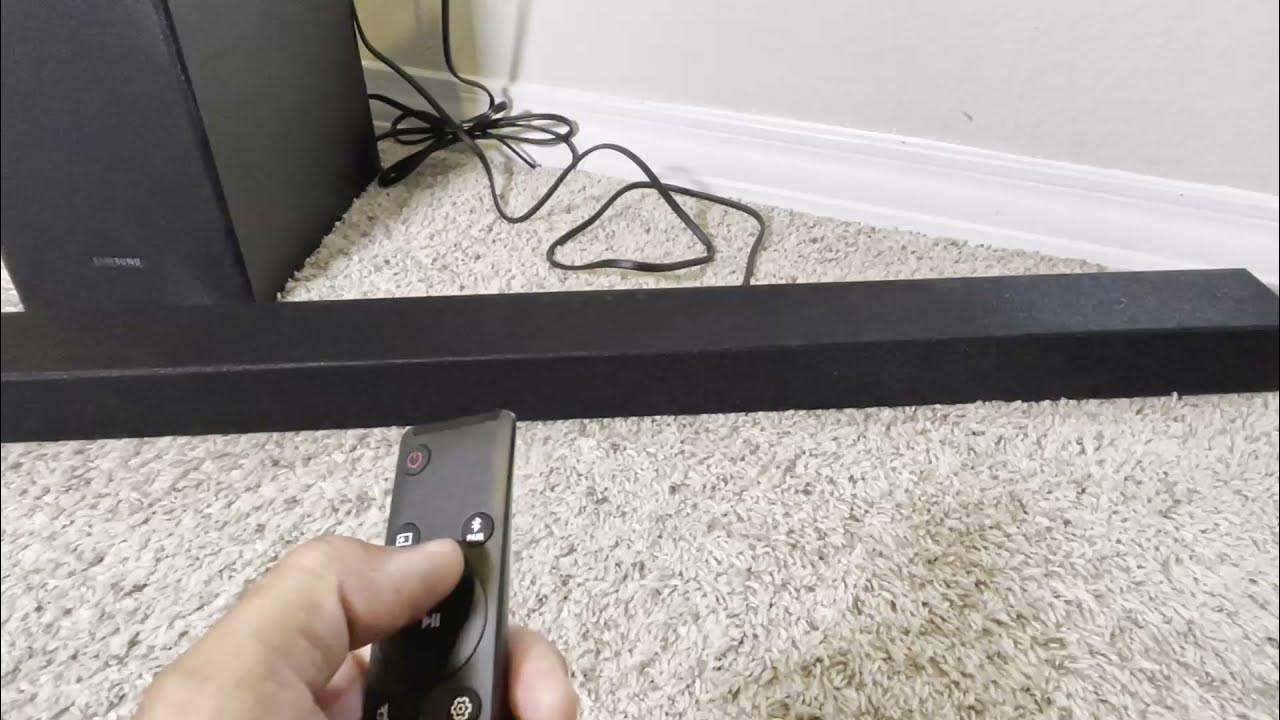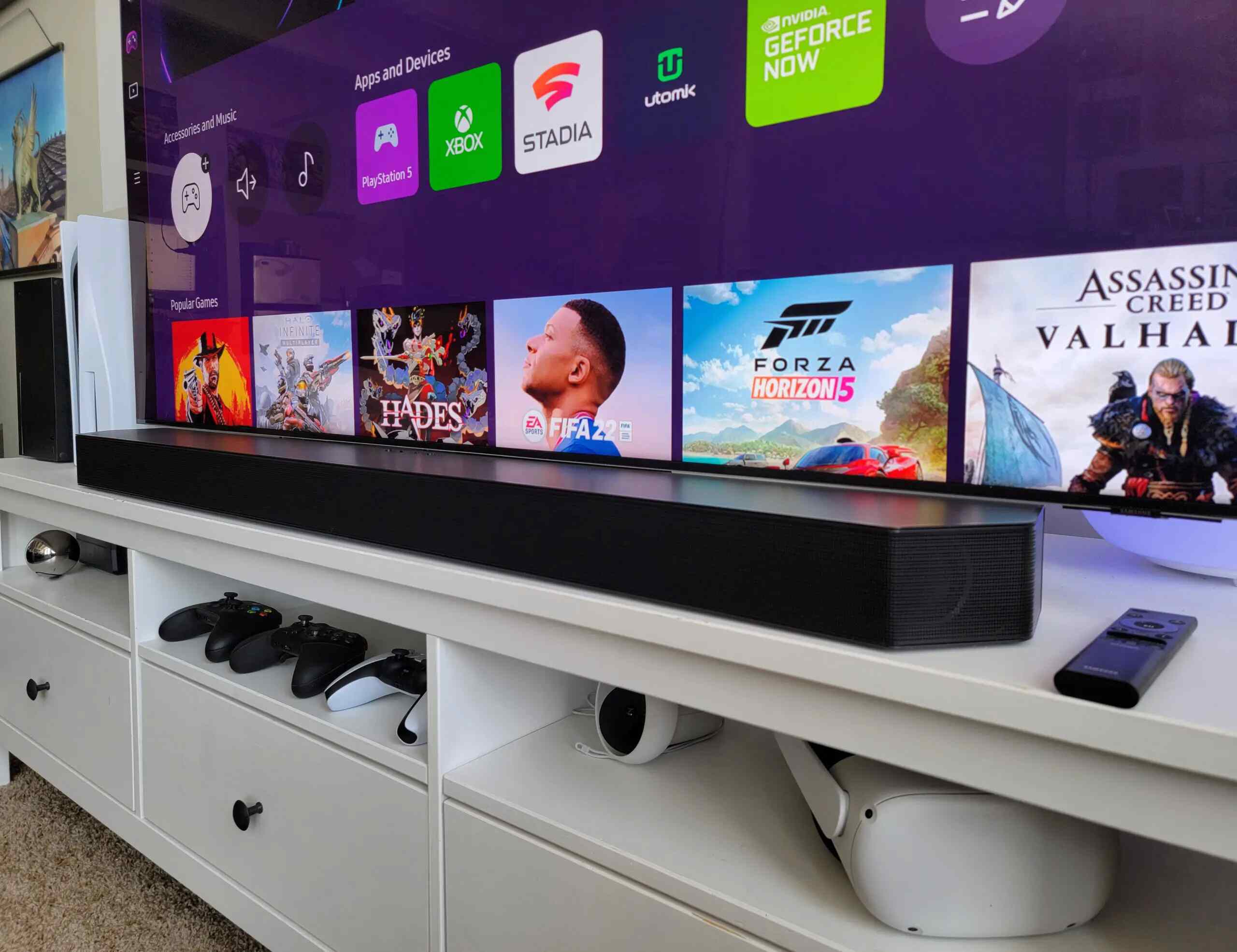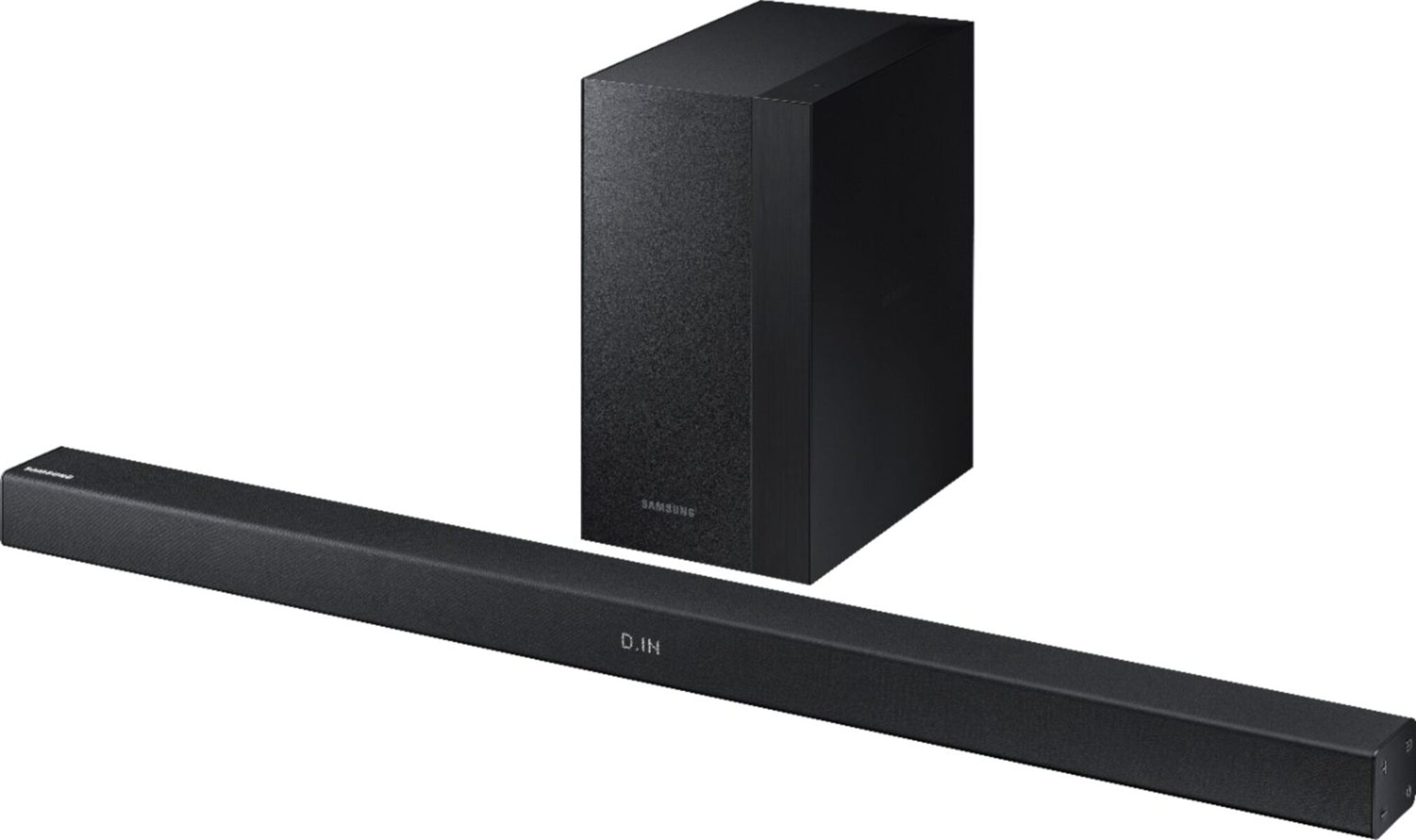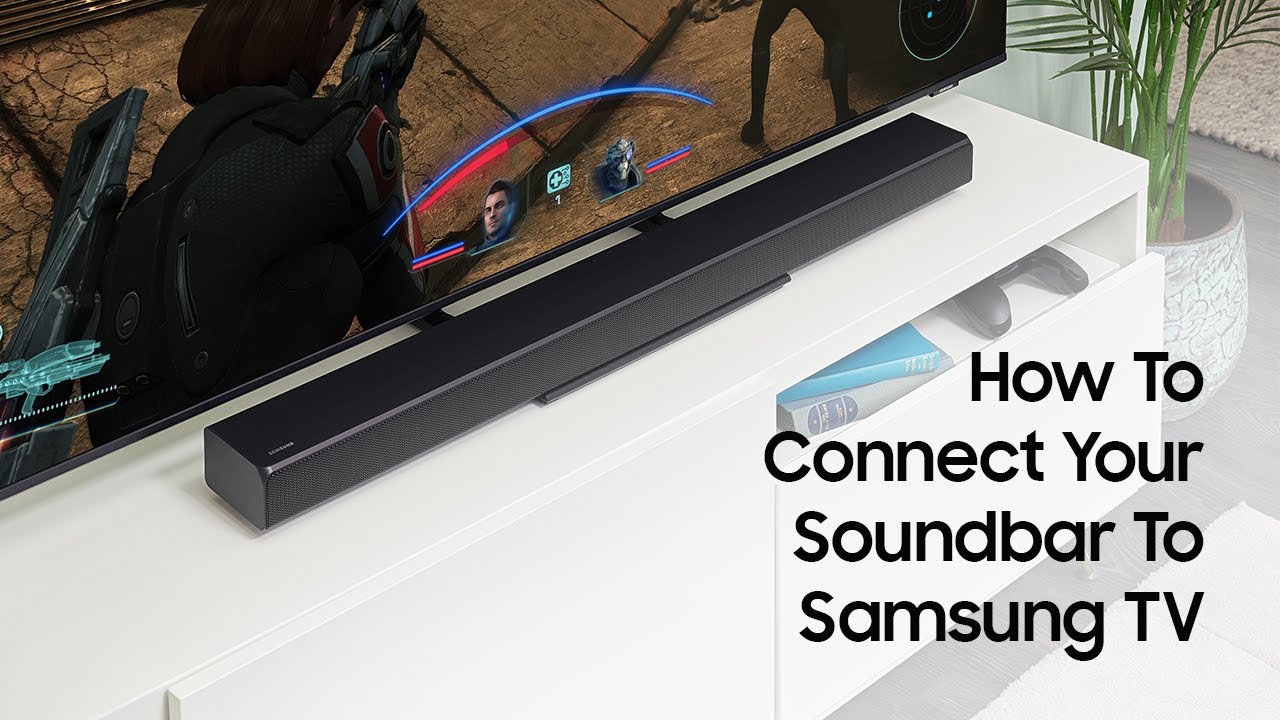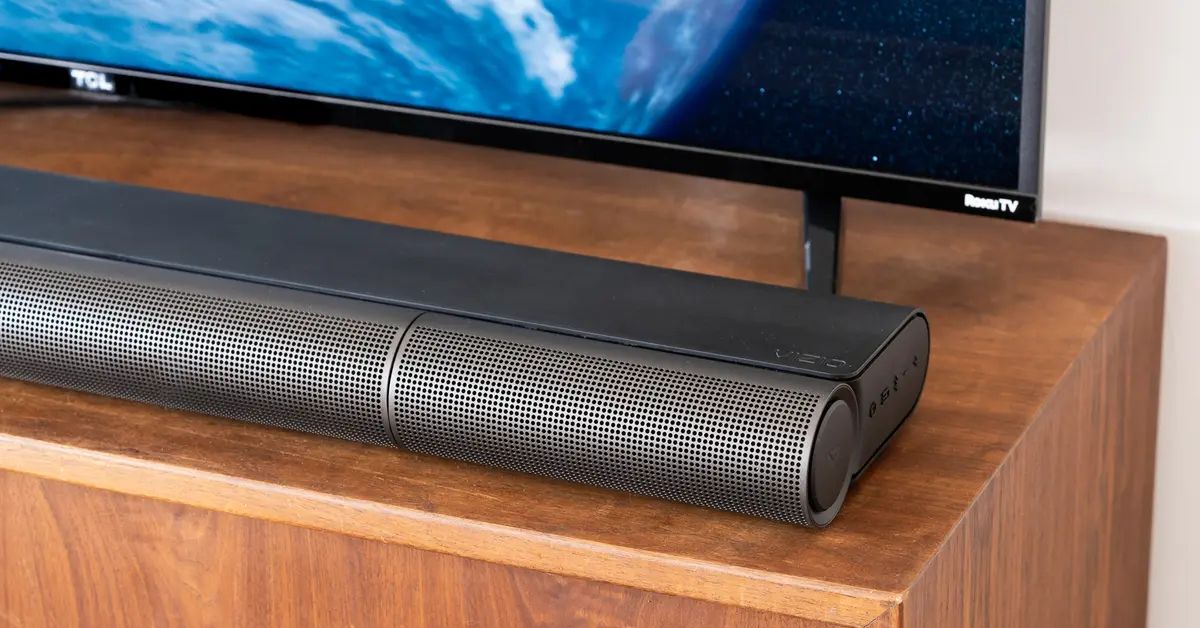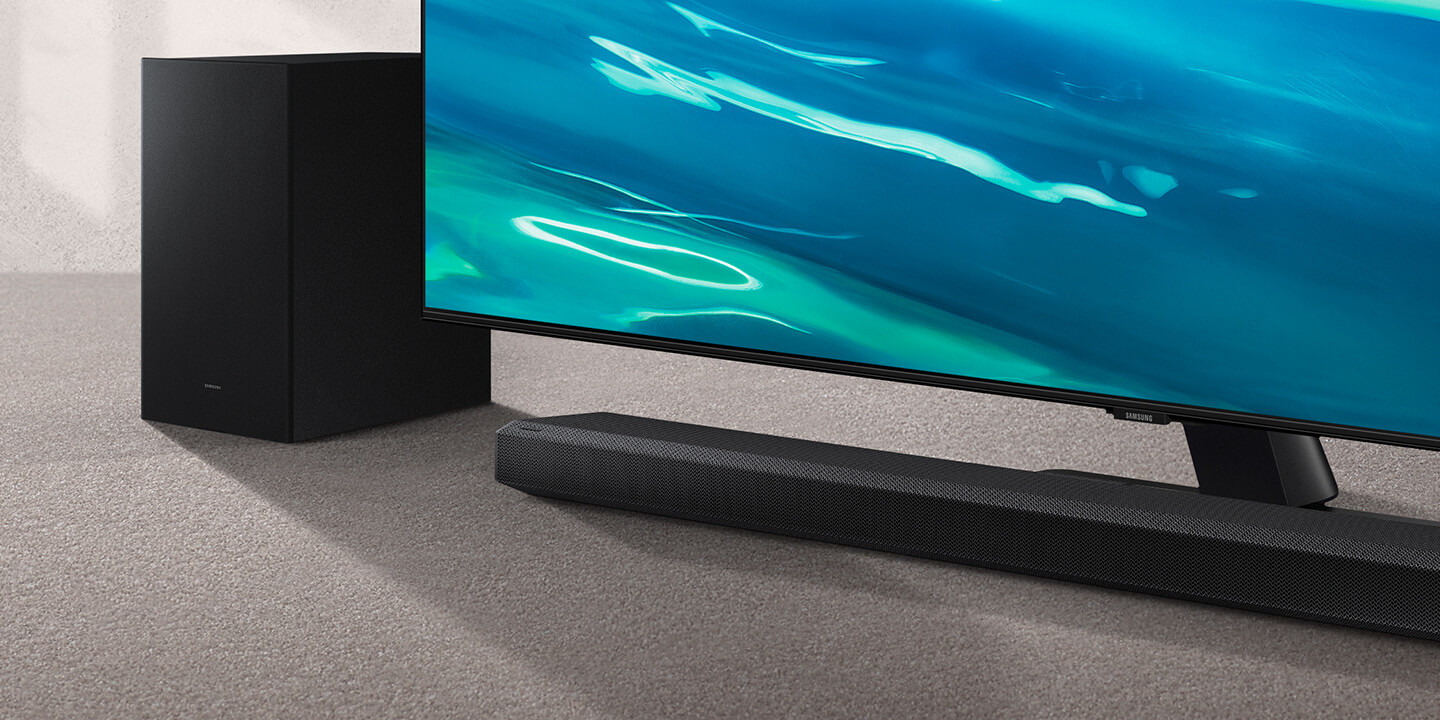Introduction
Welcome to our guide on how to set up the Samsung Soundbar A430. If you’re looking to enhance your audio experience while watching movies or listening to music, the Samsung Soundbar A430 is a great option to consider. With its sleek design and powerful sound, this soundbar can bring your entertainment to a whole new level.
In this guide, we will take you through the step-by-step process of unboxing, connecting, and configuring the Samsung Soundbar A430. Whether you’re a tech-savvy individual or a newbie, rest assured that this guide will walk you through each process in a simple and easy-to-understand way.
Before we dive into the setup, it’s important to note that the Samsung Soundbar A430 is designed to be compatible with most TVs on the market. Whether you have a Samsung TV or a different brand, you’ll be able to connect and enjoy the immersive sound experience this soundbar has to offer.
So, without further ado, let’s get started with the unboxing and initial setup of your Samsung Soundbar A430. Follow along, and soon you’ll be enjoying your favorite movies, TV shows, and music with incredible audio quality.
Unboxing and Initial Setup
The first step in setting up your Samsung Soundbar A430 is unboxing the package. Carefully remove the soundbar and all its components from the box, ensuring not to accidentally damage any of the items. The box should contain the soundbar itself, a power cord, a remote control, batteries for the remote, an HDMI cable, and a user manual.
Once everything is unboxed, find a suitable location for your soundbar. Ideally, it should be placed below or above your TV, or on a shelf near your television. Ensure that there is enough space and that it can be easily connected to your TV.
Next, connect the power cord to the back of the soundbar and plug it into an electrical outlet. Turn on the soundbar using the power button located either on the soundbar itself or on the remote control. You should see a power indicator light up to signify that the soundbar is now powered on.
Now, it’s time to connect the soundbar to your TV. The preferred method is to use an HDMI cable for the best audio and video quality. Locate the HDMI Out port on the soundbar and connect one end of the HDMI cable to it. Then, connect the other end of the HDMI cable to the HDMI ARC (Audio Return Channel) port on your TV. This will enable seamless communication between your TV and soundbar.
If your TV does not have an HDMI ARC port, you can use the optical digital audio cable that came with the soundbar. Simply connect one end of the optical cable to the corresponding port on the soundbar and the other end to the optical audio output on your TV.
With the soundbar now connected to your TV, you may need to adjust the audio settings on your TV to ensure that the sound is routed through the soundbar. Refer to your TV’s user manual for instructions on how to do this, as it can vary depending on the brand and model.
Finally, ensure that your soundbar is properly positioned and aligned with your TV. Check that it is leveled and centered for optimal sound distribution. You can also make use of mounting brackets or a wall-mounting kit if you prefer to have your soundbar mounted on a wall.
That’s it for the unboxing and initial setup of your Samsung Soundbar A430. In the next section, we will guide you through the process of configuring the soundbar’s audio settings to suit your preferences.
Connecting the Soundbar to your TV
Now that you have successfully unboxed and set up your Samsung Soundbar A430, it’s time to connect it to your TV. Follow these steps to ensure a seamless connection:
- Turn off your TV and soundbar. This will prevent any potential damage while connecting.
- Locate the HDMI ARC (Audio Return Channel) port on your TV. Most modern TVs have this port labeled as “HDMI ARC” or “ARC”. If your TV doesn’t have an ARC port, don’t worry, we’ll cover alternative connections later.
- Connect one end of the HDMI cable (included in the package) to the HDMI ARC port on your TV.
- Connect the other end of the HDMI cable to the HDMI Out port on the soundbar.
- Power on both your TV and soundbar.
- On your TV, navigate to the audio settings. Depending on the brand and model of your TV, this can usually be found in the settings menu.
- Select the audio output option and choose “HDMI ARC” or “TV Speaker + Audio Out” if available. This will route the audio from your TV to the soundbar.
- Adjust the volume and audio settings on the soundbar accordingly. You can make use of the remote control or the buttons on the soundbar itself to do this.
If your TV does not have an HDMI ARC port, there are alternative ways to connect your soundbar:
- Use an Optical cable: Some TVs come with an Optical Digital Audio Out port. If your TV has this port, connect one end of the Optical cable to the TV’s port and the other end to the Optical In port on the soundbar. Make sure to select the “Optical” or “Digital” audio output option in your TV’s audio settings.
- Use an AUX cable: If your TV has a Headphone or Audio Out port, you can connect your soundbar using a 3.5mm AUX cable. Simply plug one end into the TV’s port and the other end into the AUX In port on the soundbar. Choose the “AUX” or “Analog” audio output option in the TV’s settings.
- Use Bluetooth: If your TV supports Bluetooth connectivity and your soundbar has Bluetooth capabilities, you can pair them wirelessly. Enable Bluetooth on both devices and connect them by following the instructions provided in your soundbar’s user manual.
Once you have successfully connected your soundbar to your TV using any of the above methods, you can now enjoy enhanced audio quality while watching your favorite movies, TV shows, or playing games.
Configuring the Soundbar’s Audio Settings
After successfully connecting your Samsung Soundbar A430 to your TV, it’s time to configure the audio settings to ensure the best audio experience for your personal preferences. Follow these steps to make the most out of your soundbar:
- Access the soundbar’s settings menu: Use your soundbar’s remote control to navigate to the settings menu. Look for a dedicated button on the remote that opens the settings.
- Choose the desired sound mode: The soundbar offers various sound modes to enhance different types of audio content. For example, you can choose “Movie” mode for a cinematic experience or “Music” mode for enhanced music playback.
- Adjust the bass and treble levels: Find the equalizer settings in the soundbar’s menu and fine-tune the bass and treble levels to your liking. Increasing the bass can add depth to explosions in movies, while adjusting the treble can enhance the clarity of vocals and instruments.
- Enable any additional audio features: Samsung soundbars often come with additional audio features such as surround sound, dialogue enhancement, or virtual surround sound. Explore these options in the settings menu and enable them if desired.
- Experiment with the audio presets: Many soundbars offer preset sound profiles that are designed to optimize the audio quality for specific genres, such as sports, news, or gaming. Test these presets and choose the one that best suits your preferences.
- Adjust the volume leveling: Some soundbars have a feature called “Auto Volume” or “Volume Leveling” that keeps the volume consistent across different sources or channels. Enable this feature if you find the volume fluctuating between different audio content.
- Consider using the soundbar’s remote learning feature: If you prefer using a single remote control to control both your TV and soundbar, check if your soundbar has a remote learning feature. This allows you to program the soundbar’s remote to control the basic functions of your TV, reducing the need for multiple remotes.
Remember to periodically revisit the audio settings to fine-tune them according to your preferences as you may discover new preferences with different types of media content.
Once you have configured the audio settings to your liking, sit back, relax, and enjoy a immersive audio experience with your Samsung Soundbar A430.
Pairing the Soundbar with a Mobile Device
The Samsung Soundbar A430 offers the convenience of wireless connectivity, allowing you to easily pair it with your mobile device to stream music or other audio content. Follow these steps to pair your soundbar with your mobile device:
- Ensure that your soundbar is in Bluetooth pairing mode: Press the Bluetooth button on your soundbar’s remote control or use the soundbar’s menu to activate Bluetooth mode. You may see a Bluetooth symbol indicating that the soundbar is ready to pair.
- On your mobile device, enable Bluetooth: Open the settings menu on your mobile device and navigate to the Bluetooth settings. Toggle the Bluetooth switch to enable it. Your device will begin scanning for nearby Bluetooth devices.
- Select your soundbar from the list: After scanning, your soundbar should appear in the list of available devices on your mobile device. The name of the soundbar will typically include the model number or a customized name you set during the initial setup.
- Pair the devices: Tap on the name of your soundbar to initiate the pairing process. Your mobile device will attempt to connect to the soundbar. During this process, you may be prompted to enter a passcode. Refer to your soundbar’s user manual for the passcode if necessary.
- Confirm the pairing: Once your mobile device is successfully paired with the soundbar, you may see a confirmation message or an indicator on both devices. Your soundbar may emit a sound or the lights on it may flash to indicate a successful pairing.
Now that your mobile device is paired with the soundbar, you can start streaming audio wirelessly. Open your preferred music app or media player on your mobile device, and the sound will be routed to the soundbar, delivering high-quality audio.
It’s worth mentioning that some Samsung soundbars also support multiroom audio, allowing you to connect multiple speakers throughout your home for a synchronized audio experience. If you have other compatible Samsung speakers, refer to their respective user manuals to learn how to configure the multiroom audio feature.
With your soundbar paired with your mobile device, you can enjoy your favorite music, podcasts, or any other audio content with enhanced sound quality, all without the constraints of wires.
Tips for Optimizing Sound Quality
While the Samsung Soundbar A430 is designed to provide impressive sound quality out of the box, there are several tips and tricks you can follow to further optimize the audio experience. Consider implementing the following tips:
- Placement and positioning: Ensure that the soundbar is placed at ear level or slightly above or below it. This helps to direct the sound towards the listener and enhances the clarity and immersion.
- Room acoustics: Pay attention to the acoustics of your room. Hard surfaces can cause sound reflections, leading to a less desirable listening experience. Consider adding rugs, curtains, or acoustic panels to help reduce reflections and improve sound quality.
- Subwoofer placement: If your soundbar comes with a separate subwoofer, experiment with different placements to find the sweet spot. Placing it closer to a wall or corner can enhance bass response, while moving it away from walls can yield more balanced sound.
- Use EQ settings: Explore the EQ (Equalizer) settings available on your soundbar. Adjusting the levels of bass, treble, and other frequencies can help fine-tune the sound to your liking and the specificities of your room.
- Distance from walls: Avoid placing the soundbar too close to walls or other objects that could obstruct the sound waves. Maintaining some distance allows for a more open and natural soundstage.
- Avoid extreme volume levels: While it may be tempting to crank up the volume to the maximum, prolonged high sound levels can result in listener fatigue and potential damage to your ears and the soundbar. Find a comfortable volume that allows you to enjoy the audio without causing discomfort.
- Update firmware: Check for firmware updates for your soundbar regularly. Manufacturers often release updates to fix bugs, improve performance, and add new features. Visit the Samsung website or refer to the user manual for instructions on how to update the firmware.
- Regular cleaning and maintenance: Ensure that your soundbar is clean and free from dust and debris. Wipe the exterior with a soft, lint-free cloth, and use a small brush or compressed air to clean the speaker grilles. Clean speakers can deliver better sound quality.
- Experiment with audio sources: Try different audio sources, such as streaming services, Blu-ray discs, or high-quality audio files, to fully experience the capabilities of your soundbar. Higher quality sources tend to offer better sound fidelity.
By implementing these tips, you can enhance the sound quality and overall audio experience provided by your Samsung Soundbar A430. Remember to experiment and find the settings and configurations that suit your preferences and the characteristics of your listening environment.
Troubleshooting Common Issues
While the Samsung Soundbar A430 is a reliable and high-quality audio device, you may encounter some common issues during its usage. Here are some troubleshooting tips to help resolve these issues:
- No sound or audio playback issues:
- Ensure that both the soundbar and the TV are powered on.
- Check the connections between the soundbar and the TV, ensuring they are secure and properly plugged in.
- Confirm that the soundbar is selected as the audio output device in the TV’s settings.
- Adjust the volume levels on both the soundbar and the TV to ensure they are not set too low or muted.
- Audio is out of sync with video:
- Check if your TV has an audio delay or lip sync setting. Adjust this setting to sync the audio with the video playback.
- If using HDMI ARC, try switching to an optical cable or vice versa to see if the issue is resolved.
- Bluetooth connectivity issues:
- Ensure that Bluetooth is enabled on both the soundbar and your mobile device.
- Try unpairing and re-pairing the soundbar with your mobile device.
- Move your mobile device closer to the soundbar to ensure a strong Bluetooth connection.
- Audio distortion or poor sound quality:
- Check if the soundbar’s audio settings are optimized for the content you are playing. Experiment with different sound modes and EQ settings.
- Adjust the placement of the soundbar to reduce any potential obstructions or reflections that may affect sound quality.
- Verify that audio cables are properly connected and not damaged.
- Remote control issues:
- Replace the batteries in the remote control if it’s not functioning.
- Ensure there are no obstructions between the remote control and the soundbar.
- Check for any interference from other devices in the vicinity, such as other remote controls or electronic devices.
If you’ve tried these troubleshooting steps and are still experiencing issues with your Samsung Soundbar A430, consult the user manual or contact Samsung customer support for further assistance. They will be able to provide more detailed troubleshooting steps tailored to your specific situation.
Remember, patience and persistence are key when troubleshooting, and with proper guidance, most issues can be resolved, allowing you to fully enjoy your audio experience with the Samsung Soundbar A430.
Conclusion
Congratulations on successfully setting up and configuring your Samsung Soundbar A430! By following this guide, you have learned how to unbox and set up the soundbar, connect it to your TV, configure audio settings, pair it with a mobile device, and troubleshoot common issues.
The Samsung Soundbar A430 offers a superior audio experience, bringing your favorite movies, TV shows, music, and games to life with immersive sound. Whether you’re a cinephile, a music enthusiast, or a casual viewer, this soundbar will undoubtedly enhance your entertainment experience.
Remember, correct placement and positioning of the soundbar, optimizing audio settings, and experimenting with different audio sources can further enhance the sound quality. Don’t hesitate to refer back to this guide whenever you need guidance or encounter any issues.
We hope that this guide has been informative and helpful in getting the most out of your Samsung Soundbar A430. Enjoy the superior sound quality and immerse yourself in the world of entertainment like never before!







